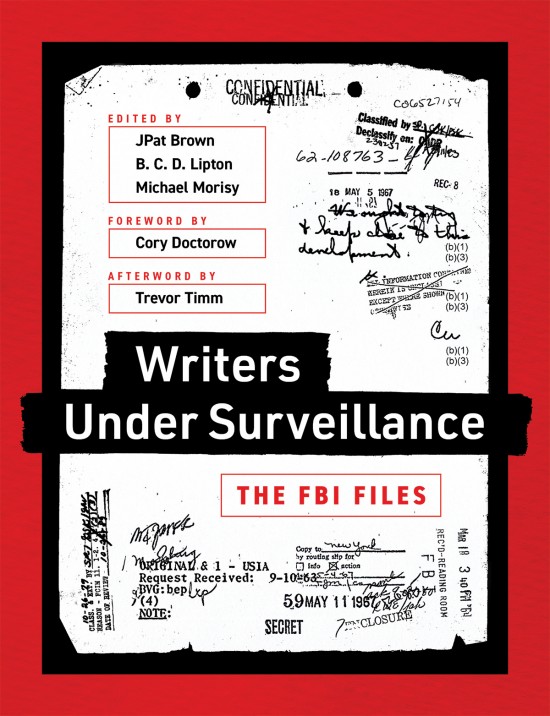16 December 2018 (Cambridge, Massachusetts) — I have been at the MIT Media Lab this weekend engaging in some workshops on learning and understanding human networks. It is all for research on my book-in-progress “Data: it’s not the new oil, it’s the new asbestos”. This coming week I will be sending out to readers my end-of-the-year post which is an overview of my book, a piece titled The End of the Beginning which is my look at the really tectonic change technology made in 2018 that few are talking about.
I have been to the Media Lab multiple times and I have often quoted its faculty in various blog posts. As I have noted, its research does not restrict to fixed academic disciplines, but draws from technology, media, science, art and design. I was last here in June for a workshop on emotive computing. Great stuff.
While I was here I ventured over to the MIT Press bookshop and picked up Writers Under Surveillance: The FBI Files, a fascinating read.
As we all know, writers are dangerous. They have ideas. The proclivity of writers for ideas drove the FBI to investigate many of them — to watch them, follow them, start files on them. Writers under Surveillance gathers some of these files, giving readers a surveillance-state perspective on writers including Hannah Arendt, Allen Ginsberg, Ernest Hemingway, Susan Sontag, and Hunter S. Thompson.
Obtained with Freedom of Information Act requests by MuckRock (a nonprofit “dedicated to freeing American history from the locked filing cabinets of government agencies”) pulled the files on these authors and they are surprisingly wide ranging; the investigations were as broad and varied as the authors’ own works:
-James Baldwin, for example, was so openly antagonistic to the state’s security apparatus that investigators followed his every move.
-Ray Bradbury, on the other hand, was likely unaware that the Bureau had any interest in his work. (Bradbury was a target because an informant warned that science fiction was a Soviet plot to weaken American resolve.)
-Ernest Hemingway, true to form, drunkenly called the FBI Nazis and sissies.
The files have been edited for length and clarity, but beyond that everything in the book is pulled directly from investigatory files. Some investigations lasted for years, others just a few days. Some are thrilling narratives. Others never really go anywhere. Some are funny, others quite harrowing. Despite the federal government’s periodic admission of past wrongdoing, investigations like these will probably continue to happen.
A list of all the writers in the FBI files: Hannah Arendt, James Baldwin, Ray Bradbury, Truman Capote, Tom Clancy, W. E. B. Du Bois, Allen Ginsberg, Ernest Hemingway, Aldous Huxley, Ken Kesey, Norman Mailer, Ayn Rand, Susan Sontag, Terry Southern, Hunter S. Thompson, Gore Vidal
Here are some snippets:
Ayn Rand
The author of a love story revolving around a young architect and his ego.
Ray Bradbury
A freelance science fiction writer whose work dealt with the development and exploitation of Mars, its effects on mankind, and its home world.
Allen Ginsberg
A poet whose activities, while extremely eccentric, apparently lack any specific direction.
Norman Mailer
A self-employed author whose writing is difficult to read and impossible at times to comprehend.
Gore Vidal
A writer who is intolerable, masquerading as smart-aleck entertainment.
Truman Capote
A writer who is quite crushed to think that [Redacted] of Garden City, Kansas, has never heard of him.
Tom Clancy
A self-employed author who is doing business as Jack Ryan Enterprises.
Susan Sontag
A writer selling her work where she can.
Ernest Hemingway
A rough, tough guy, always for the underdog.
W.E.B. du Bois
One of the most outstanding and competent Negroes in Atlanta.
Hannah Arendt
A small, rotund, stoop-shouldered woman with a crew-like haircut, masculine voice, and a marvelous mind.
Ken Kesey
A fugitive.
ENJOY YOUR WEEKEND

